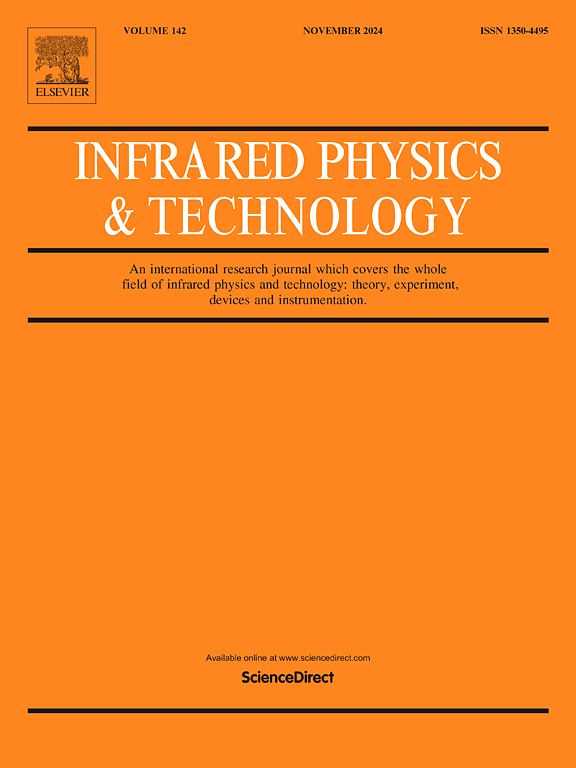Thermal and spectroscopic characterization of Yb:Lu3Al5O12 crystal from 10 K to 300 K for excellent performance laser
IF 3.1
3区 物理与天体物理
Q2 INSTRUMENTS & INSTRUMENTATION
引用次数: 0
Abstract
Temperature-dependent thermal and spectroscopic properties of Yb:Lu3Al5O12 crystal from 10 K to 300 K have been investigated for cryogenic laser design. Thermal properties, such as thermal expansion coefficient (TEC) and thermal conductivity are presented. The TEC decreases progressively as temperature drops from room temperature to 10 K. Particularly, the TEC is found to be about zero around 25 K. The peak thermal conductivity is 212.6 W/mK at ∼ 18 K, which is about 3.6 times more than that at 77 K and 30 times more than that at room temperature. Moreover, the spectroscopic properties including absorption cross sections, stimulated emission cross sections and fluorescence lifetime have been measured. The at zero thermal expansion (ZTE) temperature is 18.52 × 10−20 cm2, which is almost an order of magnitude than the result at 300 K, suggesting a more efficient operation. Based on the large thermal conductivity, zero TEC and high emission cross section around ZTE temperature, high-power high-beam-quality and highly efficient Yb:LuAG lasers can be anticipated.
Yb:Lu3Al5O12晶体在10k至300k条件下的热光谱表征
研究了Yb:Lu3Al5O12晶体在10k ~ 300k温度下的热特性和光谱特性。热性能,如热膨胀系数(TEC)和导热系数。当温度从室温降至10 K时,TEC逐渐降低。特别是,发现TEC在25 K左右大约为零。在~ 18 K时的峰值导热系数为212.6 W/mK,是77 K时的3.6倍,是室温时的30倍。测定了其光谱特性,包括吸收截面、受激发射截面σSE和荧光寿命。在零热膨胀(ZTE)温度下的σSE为18.52 × 10−20 cm2,几乎比在300 K时的结果高一个数量级,表明运行效率更高。基于大导热系数、零TEC和中兴温度附近的高发射截面,可以期待高功率、高光束质量和高效率的Yb:LuAG激光器。
本文章由计算机程序翻译,如有差异,请以英文原文为准。
求助全文
约1分钟内获得全文
求助全文
来源期刊
CiteScore
5.70
自引率
12.10%
发文量
400
审稿时长
67 days
期刊介绍:
The Journal covers the entire field of infrared physics and technology: theory, experiment, application, devices and instrumentation. Infrared'' is defined as covering the near, mid and far infrared (terahertz) regions from 0.75um (750nm) to 1mm (300GHz.) Submissions in the 300GHz to 100GHz region may be accepted at the editors discretion if their content is relevant to shorter wavelengths. Submissions must be primarily concerned with and directly relevant to this spectral region.
Its core topics can be summarized as the generation, propagation and detection, of infrared radiation; the associated optics, materials and devices; and its use in all fields of science, industry, engineering and medicine.
Infrared techniques occur in many different fields, notably spectroscopy and interferometry; material characterization and processing; atmospheric physics, astronomy and space research. Scientific aspects include lasers, quantum optics, quantum electronics, image processing and semiconductor physics. Some important applications are medical diagnostics and treatment, industrial inspection and environmental monitoring.

 求助内容:
求助内容: 应助结果提醒方式:
应助结果提醒方式:


